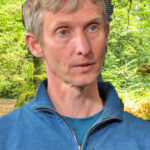Gisteren berichtte ik nogal uitgebreid over het feit dat niet de gletsjers in de Himalaya in een stroomversnelling komen, maar wel de verwikkelingen rond een fout in het IPCC-rapport. Speurwerk van met name de Amerikaanse klimaatonderzoeker John Nielsen-Gammon had in december duidelijk gemaakt dat het IPCC zich in Working Group II van het vierde rapport in 2007 baseerde op een citaat van de Indiase glacioloog, die in 1999 in New Scientist had laten vallen dat de gletsjers in de Himalaya in 2035 wel eens verdwenen zouden kunnen zijn. Het IPCC stelde vervolgens in 2007 in AR4 dat het very likely was (meer dan 90% zekerheid) dat de gletsjers inderdaad in 2035 verdwenen zouden zijn.
Resumé
Vorige week besteedde New Scientist aandacht aan de zaak en kwamen zowel Hasnain als Murari Lal (de lead author van het betreffende hoofdstuk in het IPCC-rapport) aan het woord. Hasnain ga daarin toe dat zijn opmerking destijds speculatie geweest was en dat het nooit in het IPCC-rapport had mogen komen:
But Hasnain rejects that. He blames the IPCC for misusing a remark he made to a journalist. “The magic number of 2035 has not [been] mentioned in any research papers written by me, as no peer-reviewed journal will accept speculative figures,” he told New Scientist.
“It is not proper for IPCC to include references from popular magazines or newspapers,” Hasnain adds.
En in Thaindian News voegde Hasnain daar aan toe:
“It is not proper for IPCC to include references from popular magazines or newspapers,” Hasnain added.
Lal ging vol in de tegenaanval in New Scientist:
However, the lead author of the IPCC chapter, Indian glaciologist Murari Lal, told New Scientist he “outright rejected” the notion that the IPCC was off the mark on Himalayan glaciers. “The IPCC authors did exactly what was expected from them,” he says. “We relied rather heavily on grey [not peer-reviewed] literature, including the WWF report,” Lal says. “The error, if any, lies with Dr Hasnain’s assertion and not with the IPCC authors.”
Daarna schreef ik dat Hasnain er wel wat gemakkelijk vanaf was gekomen in New Scientist:
Hasnain komt er zelf overigens wel wat gemakkelijk vanaf in New Scientist. Want je neemt toch aan dat hij als Indiase glacioloog weet dat het IPCC claimt dat in 2035 de gletsjer weg zijn in de Himalaya. Heeft hij zich zelf wel eens afgevraagd waarop het IPCC zich baseerde? Had hij niet wat eerder aan de bel moeten trekken? Wat weerhield hem eventueel? Op deze vragen zullen we in de nabije toekomst ongetwijfeld nog terugkomen.
Syed Hasnain
Ik had gehoopt vandaag de eerste te zijn die meer kon vertellen over Hasnain, maar er zijn meer mensen in de wereld die dit onderwerp volgen en die net als ik van het bestaan van Google weten. Want meer dan Google is niet nodig om erachter te komen dat Hasnain inmiddels bij The Energy and Resources Institute (TERI) werkt, het researchinstituut dat geleid wordt door Pachauri en dat vestigingen heeft in diverse continenten. New Scientist vermeldde dit echter niet in het artikel vorige week en koppelde Hasnain nog altijd aan de Jawaharlal Nehru University in Delhi, maar zijn homepage daar vermeldt netjes dat hij met pensioen is.
Zoeken op Hasnain op de TERI-website levert een aantal interessante links op. Onder het kopje TERI in het nieuws treffen we een samenvatting aan van dit artikel in The Tribune van 11 november 2008:
Himalayan glaciers may disappear by 2035
The Tribune, 11 November 2008
The glaciers in the Himalayas are receding faster than in any other part of the world and, if the present rate continues, a large number of them may disappear by 2035 because of climate change, warn Indian and foreign environmentalists and geologists. The Himalayas have the largest concentration of glaciers outside the polar caps. That is why, they are called the “Water Towers of Asia.” The Himalayas lie to the north of the Indian subcontinent and to the south of the central Asian high plateau. They are bound by the Indus on the west slope of Mt Nanga Parbat (near Gilgit), and in the west, by river Jaizhug Qu on the eastern slope of Mt Namjabarwa. The Geological Survey of India claims that the Himalayan glaciers occupy about 17 per cent of the total mountainous range, while an additional 30 to 40 per cent area has seasonal snow cover. TERI’s scientist, Prof Syed Hasnain, in a recent study claimed “All the glaciers in the middle Himalayas are retreating, and they could disappear from the central and eastern Himalayas by 2035.”
Ter verdediging van Hasnain moet je constateren dat hij hier niet persoonlijk geciteerd lijkt te worden en dat met “recent study” best gewoon het New Scientist-artikel uit 1999 bedoeld kan zijn (gewoon slordig werk van de journalist). Het heeft echter vermoedelijk sinds november 2008 op de website van TERI gestaan. Niemand bij TERI en ook Hasnain zelf niet voelde zich blijkbaar geroepen om deze passage te rectificeren, al was het maar op de eigen website. Echter, nu anderen hebben blootgelegd dat 2035 een absurd getal is neemt Hasnain er in New Scientist opeens afstand van:
Hasnain, of Jawaharlal Nehru University in Delhi, who was then chairman of the International Commission on Snow and Ice’s working group on Himalayan glaciology, has never repeated the prediction in a peer-reviewed journal. He now says the comment was “speculative”.
Eigenbelang
De Britse journalist Richard North, die op zijn blog Eureferendum de belangenverstrengeling van Pachauri aan het blootleggen is, heeft wel een idee waarom Hasnain al die jaren niet zo’n haast had om de wereld te verkondigen dat het toch wat vreemd was dat iedereen, die beweerde dat de Himalaya-gletsjers in 2035 verdwenen zullen zijn, zich leek te baseren op zijn speculatieve opmerking in 1999. Ook voelde hij zich nooit geroepen om de wereld te wijzen op de blunder in het IPCC-rapport. De reden is zoals altijd vrij voor de hand liggend en banaal: eigenbelang, geld.
Want er valt met het doemscenario van de Himalaya-gletsjers voor ogen best wel geld op te halen voor onderzoek, aldus North in zijn stuk van gisteren getiteld Pachauri: there is money in them glaciers.
With the case for more research thus established, Pachauri’s institute, TERI, approached the wealthy Carnegie Corporation of New York through a consortium led by the Global Centre for funding to carry out precisely the work to which his own “independent” report had drawn attention.
In November 2008, they were successful, being awarded a $500,000 grant for “research, analysis and training on water-related security and humanitarian challenges to South Asia posed by melting Himalaya glaciers.” This helped Dr Pachauri set up the TERI Glaciology team, putting at its head now professor Syed Iqbal Hasnain.
En vorige week nog kondigde TERI een samenwerking aan met IJsland in een bijeenkomst met de president. Deze IJslandse president kreeg (toevallig?) onlangs een Indiase onderscheiding en bij de uitreiking zei dhr. Grimsson:
In his speech, Grímsson announced that he has decided to use the prize, ISK 13.5 million (USD 108,000, EUR 75,000), to strengthen the cooperation between Icelandic and Indian glaciologists and soil scientists and enable Indian university students to study in Iceland.
HighNoon
En wat te denken van het HighNoon-project dat betaald wordt door de Europese Commissie en waar 3 miljoen euro mee gemoeid is. In december schreef North al:
The EU programme, given the unashamedly alarmist title “High Noon” after the classic Western film of the same name, had been launched in the May. It was to run for three years, “bringing together leading research institutions in the Netherlands, Britain, Switzerland and India,” including The Energy and Resources Institute (TERI), of which Dr Pachauri is Director General.
Ook Nederland is hier bij betrokken en we zullen de komende tijd eens kijken of we daar meer over te weten kunnen komen. North houdt het erop dat Hasnains en Pachauri’s doelen bereikt zijn. Zoals het TERI persbericht schrijft:
TERI has initiated the establishment of Glacier Monitoring Observatories at Kolahoi Glacier, Jammu and Kashmir and another at East Rathong Glacier, Sikkim. These two glaciers are being monitored with the state-of-art scientific instruments on a regular basis for various parameters like Energy Balance, Mass Balance and Hydrological Balance for the glacierized region.
Er zijn dus monitoring stations, er komt geld van verschillende kanten en wetenschappers krijgen training in het buitenland. De buit is binnen en het hele 2035-verhaal doet er niet meer zoveel toe. North:
However, with the addition of EU funding, Dr Hasnain can afford to be more candid. He has been able to set up a major research facility at Latey Bunga, Mukteshwar, with several outstations in what is now a well-resourced operation.
Meanwhile, Dr Pachauri, head of the parent research institute, TERI, and a “full-time salaried employee”, is seeking to disown his own 2007 report. Despite having dismissed criticism of it by the Indian government as “voodoo science”, he told an Indian news agency today that he washed his hands of the controversy saying he has “absolutely no responsibility”.
IPCC moet straatje schoon vegen
Roger Pielke jr blijft zich op zijn blog verbazen over Pachauri en het IPCC:
Of course, neither Dr. Pachauri nor Dr. Hasnain ever said anything about the error when it was receiving worldwide attention (as being true) in 2007 and 2008, nor did they raise any issues with the IPCC citing non-peer reviewed work (which is a systemic problem). They did however use the IPCC and its false claims as justification in support of fund raising for their own home institution. At no point was any of this disclosed.
If the above facts and time line is correct (and I welcome any corrects to details that I may have in error), then what we have here is a classic and unambiguous case of financial conflict of interest. IPCC Chairman Pachauri was making public comments on a dispute involving factual claims by the IPCC at the same time that he was negotiating for funding to his home institution justified by those very same claims. If instead of climate science we were instead discussing scientific advisors on drug safety and funding from a pharmaceutical company to the advisory committee chair the conflict would be obvious.
Climate science desperately needs to clean up its act.







Hoe hangt dit verhaal samen met de bij CRU gehackte emails?
@Remco: Dit topic geeft wederom een duidelijke reden om de inhoud van de CRU-mails niet af te doen als "slechts onschuldige ouwejongenskrentebrood-praatjes van wetenschappers onder elkaar".
@Leo
Ik begrijp dit niet. Uit het bovenstaande maak ik op dat er wellicht een fout staat in het IPCC rapport, gebaseerd op een onzorgvuldigde referentie, en dat de bewuste Indiase glacioloog heeft nagelaten dat te corrigeren. Dat is misschien een fout, maar nog geen bewijs voor fraude, lijkt mij. Hoe dan ook, Hajo Smit geeft aan de discussie moet gaan over de gehackte emails. Uit niets maak ik op dat het bovenstaande verhaal terugkomt in de emails.
Het bovenstaande bevestigt mijn vermoeden dat het hier op deze site niet zo zeer gaat om een kritische analyse van de emails (kan ik me nog iets bij voorstellen, als ik mijn best doe) maar meer in brede zin om het ontkennen van AGW.
Remco, wat bedoel je met de "gehackte emails"? Nee deze zaak heeft niet direct met die e-mails te maken, maar zoals Leo Bokkum al aangeeft, het duidt op iets groter dan een krentenbrood. 2035 was geen onzorgvuldige referentie, het was een mededeling van Hasnain (wetenschapper) aan Pearce (journalist). Het is volkomen idioot dat zo'n mededeling in een IPCC rapport verschijnt, en helemaal als er al interne objecties aangevoerd werden.
http://rogerpielkejr.blogspot.com/2010/01/strange…
De gehackte e-mails vormen de basis, maar feit is dat climategate ook een lichte kentering geeft aan het klimaatdebat. Ik denk dat het in kaart brengen van de belangenverstengeling van Pachauri wellicht niet gebeurd zou zijn zonder climategate. Tegelijkertijd zitten er in de climategate e-mails zelf wellicht weinig directe bewijzen voor de belangenverstrengeling van Pachauri. Daarom hebben wij het ook over 'de nasleep' van climategate.
Ook de Himalaya en 2035 zit in deze hoek, ik vraag me af of dit zonder climategate zo aan het rollen was geraakt. Je merkt nu gewoon dat meer journalisten (denk aan Richard North) zich op het klimaatdebat beginnen te richten.
De afspraak die Rypke, Hajo en ik hebben is dat ongeveer 6 op de 10 berichten over de CRU e-mails/bestanden moeten gaan. De rest mag ook algemener op het klimaatdebat betrekking hebben. Laten we niet vergeten dat climategate betrekking heeft op een relatief klein groepje invloedrijke klimaatonderzoekers. Ik sluit meer onthullingen de komende tijd niet uit (denk aan de GISS e-mails die nu zijn vrijgegeven) en dat scharen we voor het gemak ook onder climategate.
Toevalligerwijze ken ik een aantal van die Nederlandse high-noon onderzoekers erg goed. Een van hen zei van de week al dat gedoe rondom Pachauri ook op hen afstraalde, wat hem bevreemde omdat Pachauri helemaal niets met high noon van doen heeft.
Maar ik zal hem nog eens nader bevragen.
Overigens lees ik op de highnoon website (http://www.eu-highnoon.org) en de daar aangeboden info helemaal niets over 2035 of iets wat daar op lijkt. Alleen over de ontwikkelingen die we ook in de data zien (zie mijn commentaar op het eerdere gletsjer-topic)
Het meest verbazingwekkend vind ik deze passage: "“The IPCC authors did exactly what was expected from them,” he says. “We relied rather heavily on grey [not peer-reviewed] literature, including the WWF report,” Lal says. “The error, if any, lies with Dr Hasnain’s assertion and not with the IPCC authors.”
Dis het Ipcc gaat prat op zijn Peer-reviewed bronnen, om dan te zeggen dat een onderdeel zwaar leunde op een afwijking daarop..
"ik ben altijd principieel, maar hierin niet".
Vreemd.
Dan komt de vraag waar ze nog meer niet zo principieel is geweest
Via de links kwam ik bij de klacht van Roger Pielke jr die het zelfde verschijnsel van grey onderzoek tegenkomt in hfdstuk 8 van het ipcc rapport, over rampen agv klimaatverandering: http://rogerpielkejr.blogspot.com/2009/06/systema…
Dateert al van juni j.l. Opmerkelijk dat met deze kritiek ook nog niets gedaan schijnt te zijn, doodgezwegen is.
En zo zal het balletje wel verder rollen: alle hoofdstukken van het rapport gaan in de loop van de tijd doorgespit worden op fouten en verachtelijke praktijken.
En dat alles na een eerste begin met kritiek door een buitenstaander, steve mcintyre, en vervolgens een stel uitgelekte emails.
Het Ipoc komt steeds meer in zijn onderbroek te staan
, het wachten is op de tsunami van uit-de-school-klappers..
" De inkt is nog niet droog of.."
http://www.timesonline.co.uk/tol/news/environment…
.. ook de klacht van Roger pielek wordt verhootd. Times online stelt dat ook het klimaatrampen- scenario van het IPcc niet gebaseerd is op peer review.